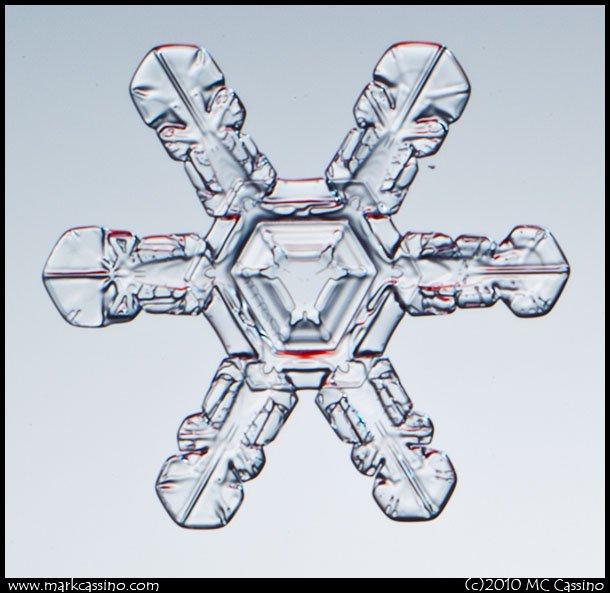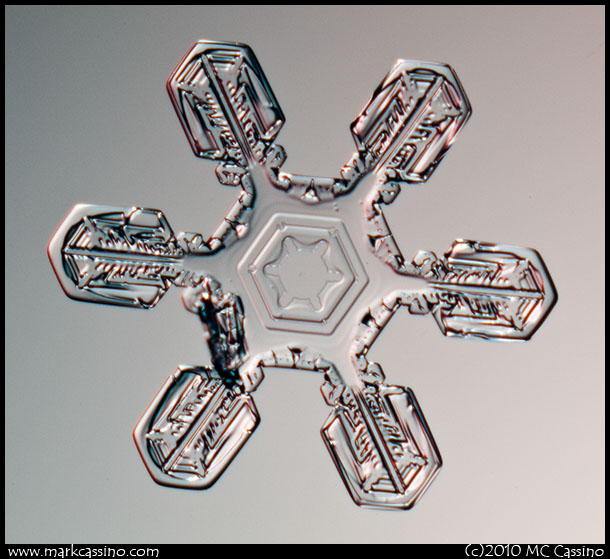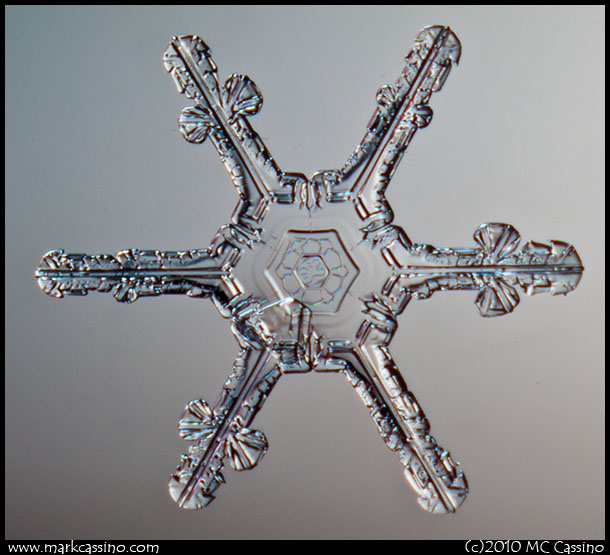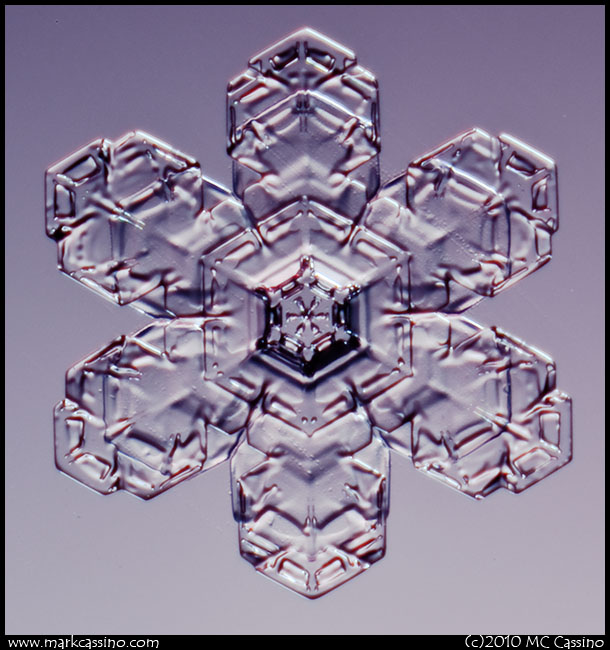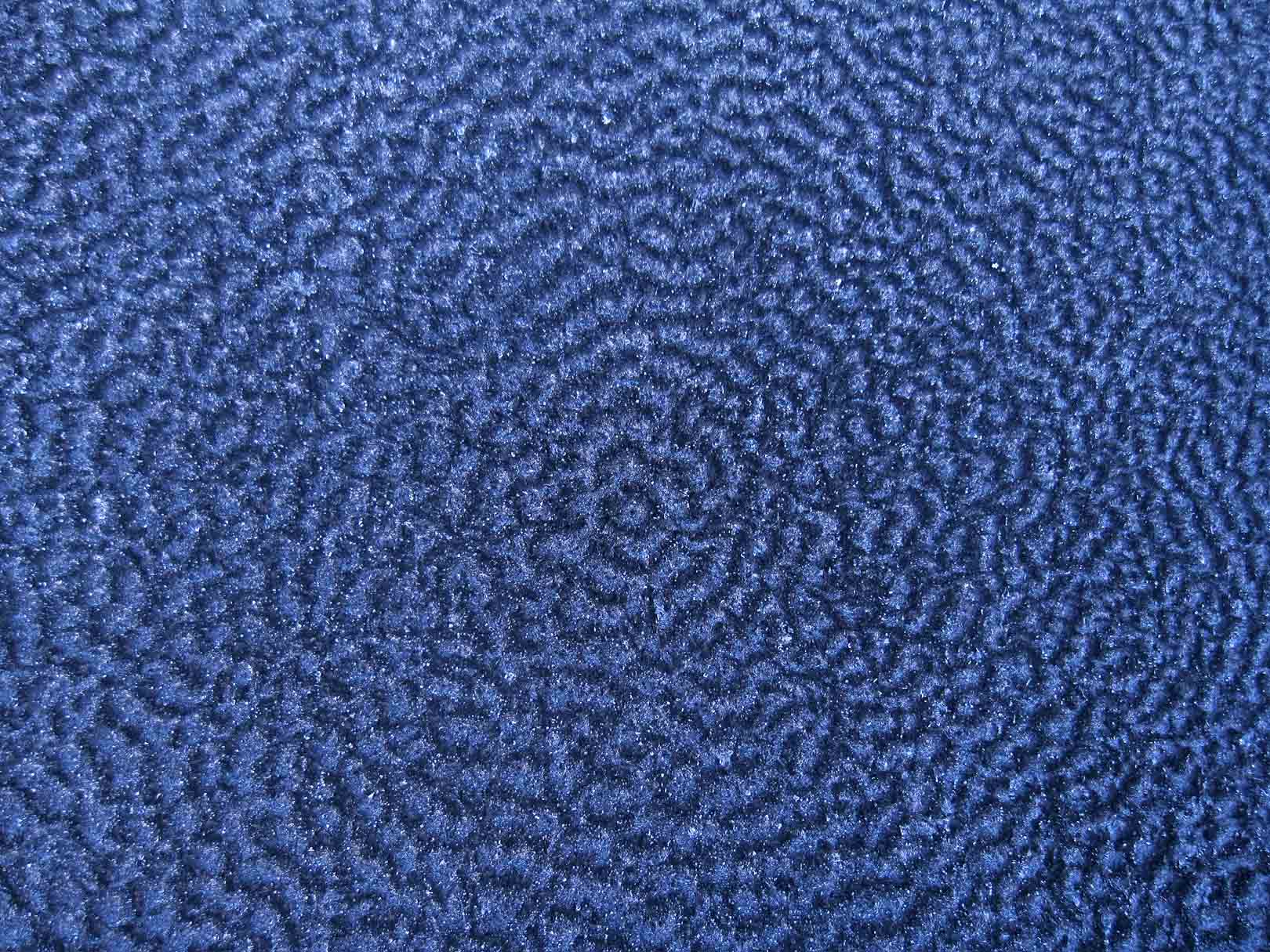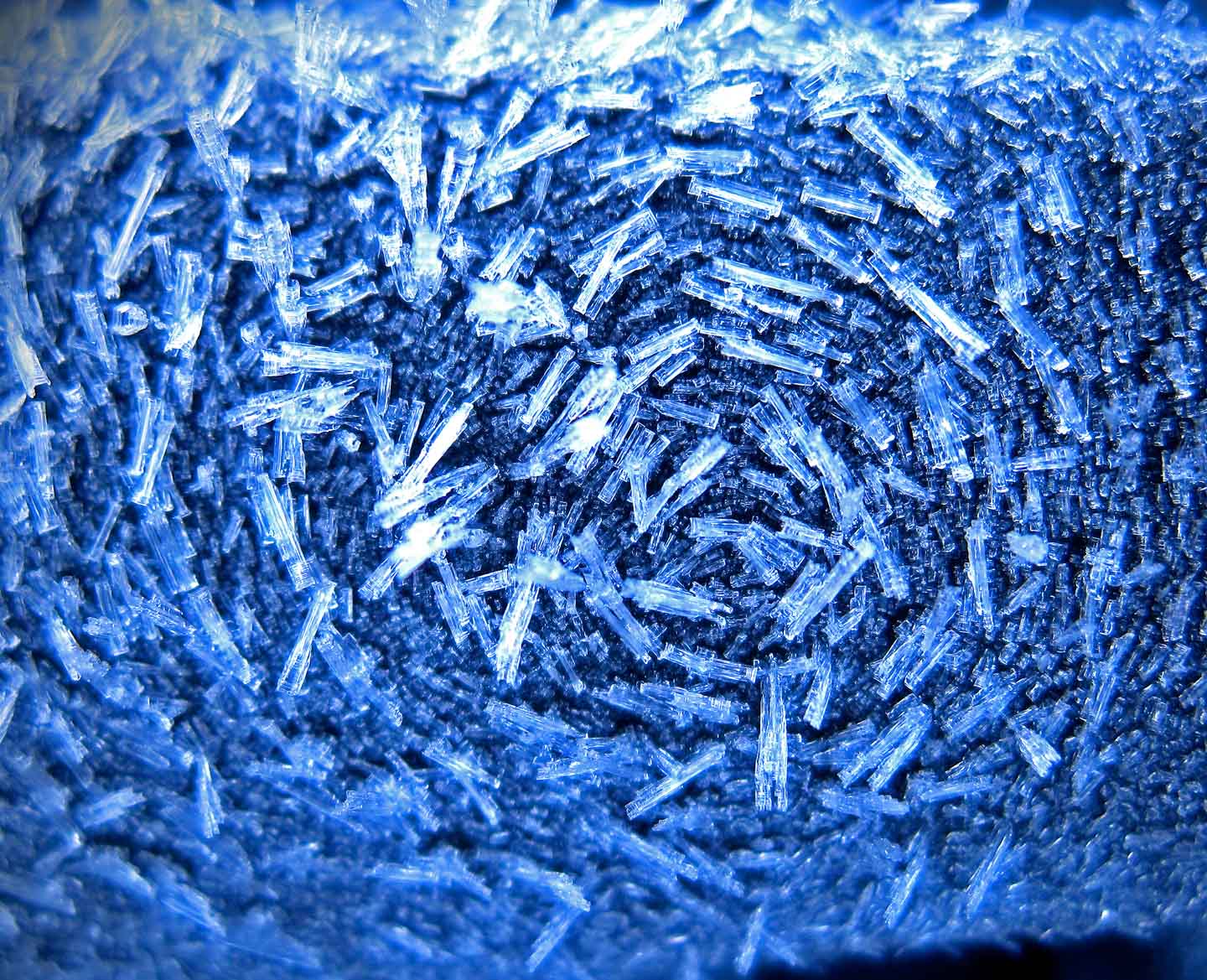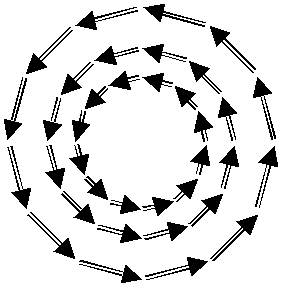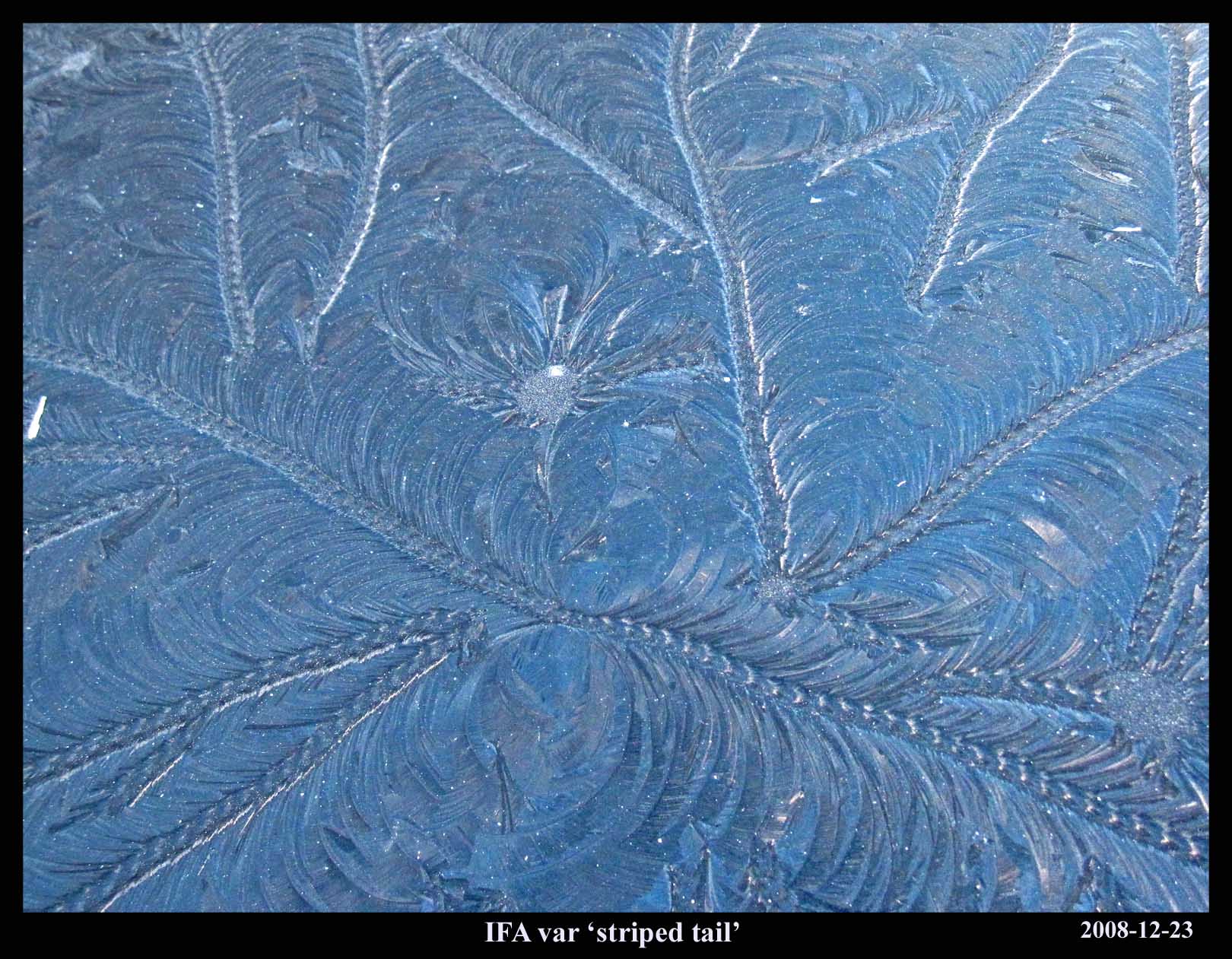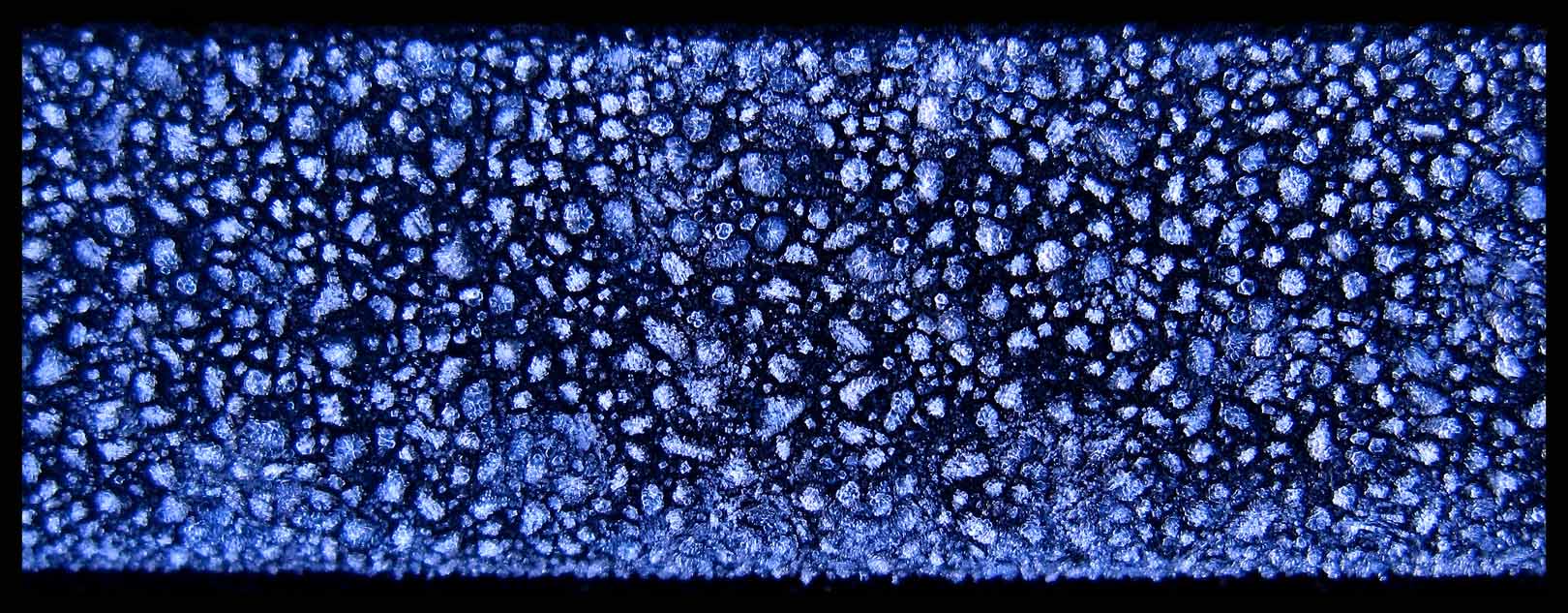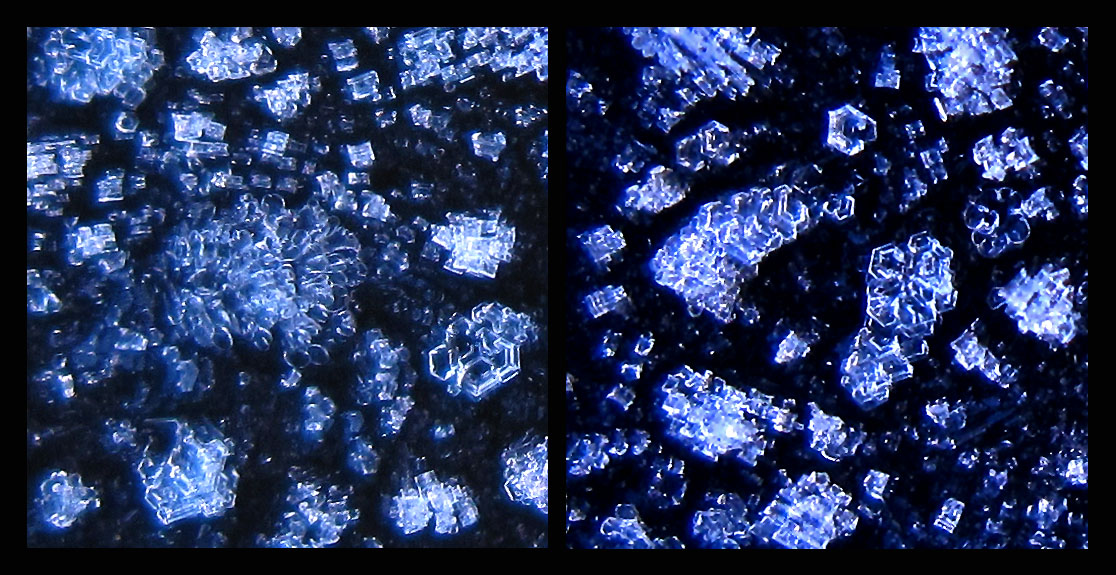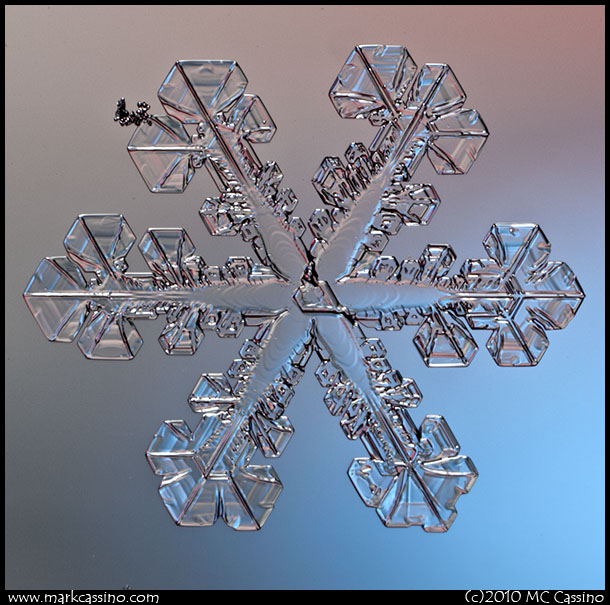Another Snow Crystal
February 14th, 2010Two Snow Crystals and a Review
February 10th, 2010Yesterday' snow fizzled by midnight, and the show smiled upon us here in Michigan this morning. On the news I hear about the blizzard in the mid Atlantic, but up here in the snow belt all is calm.
Here's another snow crystal from yesterday's storm - imperfect but still interesting:
An another, fractured and imperfect:
And here's a link to a new review of The Story of Snow on the Art of Irreverence Blog :
http://artofirreverence.com/2010/02/09/snow/
- Mark
It Snowed Today
February 9th, 2010It snowed today. It's snowing now. At first the snow was hard and driving, wet and clumping. Now the snow is dry and dusty, tiny and incomplete. But between those things it breifly fell, small and well formed, tiny dots just a millimeter or so across.
Here's one photo from tonight.
Click the image for a larger view.
- Mark
I am a giant snow crystal, imperfect thing of habit, bouncing along life's gusts,...
February 6th, 2010Some reviewers of The Story of Snow mistakenly call me the main author. I don't know why they make that mistake - Mark's role as the main author is clearly implied by his copyright on the dedications page and elsewhere. My role was just to check the text and make some suggestions.
But I am very glad he asked me to help. In fact, in 2004 I pitched an idea to some publishers that was similar in some respects to, though not as good as, The Story of Snow. My version was fiction. In it, a boy in his yard kicks up a bit of leaf dust, and we track the dust rising through a cloud, eventually to return to the boy's yard as a snow crystal. One publisher expressed some interest, asking me to turn it into non-fiction. I didn't bother.
Another way that Mark and I have similar ideas in that we both liken snow to people. In The Story of Snow, the uniqueness of each crystal is likened to our own uniqueness. I have thought about other ways snow resembles people; and in my background write-up for the Junior Library Guild, I mentioned some of them. Inspired by some of the nice science essays I read in the New York Times, I developed these resemblances into a little essay and submitted it to them. It didn't make the cut, but I think you might enjoy it. Here it is.
Seeing Ourselves in a Flake of Snow
The silently falling snow crystal can vanish in one’s breath, yet can build up into glaciers that carve mountains. Individually weak yet collectively strong; people are like that too. And if we look deeper into the little flake’s tumble from the clouds, we may see even more parallels to ourselves.
Consider its birth. A snow-crystal’s origin lies with some fleck of mineral or organic matter kicked up from the ground. Though most never get far, the occasional bit of dust floats high enough to be caught in a series of updrafts. Upward it floats, cooling all the while, until dew nucleates on its surface. The dust, like the irritant in an oyster that starts the pearl, becomes a miniscule speck, engulfed in a tiny yet growing ball of water – a droplet. This droplet may be as near to a perfect sphere as we are likely to find anywhere. But spherical perfection doesn’t last.
When the droplet cools below freezing, it enters a supercooled state in which it may crystallize into ice. But it cannot freeze right away. Think of the supercooled droplet as an unfertilized egg, needing a tiny ice ‘seed’ to transform into ice. These seeds, properly called 'ice nuclei',
Ripples
February 5th, 2010When there is no pebble tossed
No wind to blow
--Grateful Dead “Ripple”
I don’t know where to start on this one. For some time I’ve been seeing concentric circular patterns on car windshields and car bodies – bands of white spreading out from a central point like ripples in a pond from a tossed pebble. Typically, they spread outward 3-10 inches or so before meeting up with ripples originating from another spot.
When I try to zoom in on the individual crystals, I usually see only vague outlines with the occasional recognizable form. What could cause this pattern? Here's a clue.
Mystery of Whirlpool Hollows
February 3rd, 2010The hollow columnar crystals are oriented lengthwise along concentric circles, which strongly suggests that an underlying film froze with the same rotating crystal orientation. This is strange. To see why I think it strange, we need to specify crystal direction. Consider the ice-crystal optic axis, the length-wise direction of the columns (or the direction straight into a stellar-star crystal). If we draw the optic axis for each crystal as an arrow, then we would have something like the following picture.
When a film of water on a smooth surface like glass or a car roof freezes, the preferred crystal orientation is that with the arrow pointing straight up and out of the surface. So, I find the above pattern mysterious - why don't the arrows have any trend toward pointing upward? Why do all the arrows stay in the same plane? Another mystery is the fact that I’ve seen this same whirlpool pattern with about the same center spot on both side mirrors on more than one morning. Perhaps the whirlpool pattern arises somehow because the surface is curved. Or maybe films of water on plastic freeze differently than films on smooth metal or glass. For now, I’ll call this the mystery of whirlpool hollows.
- JN
BEDFISH: Revising an old Idea for Classifying Surface Ice Forms
January 31st, 2010It often seems like people refer to any kind of ice stuck on something as frost. If one looks in books or the Internet, one can usually find a specific term for the many different and interesting ice formations, but a term used by one group of people generally differs from that used by another. Wouldn’t it be nice for scientists and naturalists (at least) to have some generally universal, agreed-upon way to describe any surface-ice formation? Snow crystals have such a system, so why not surface-ice forms?
We could try to establish word-names for each formation, like “frost flower”, but different people are used to using different names for the same thing, and they are unlikely to give up the habit, particularly if they are unfamiliar with the language of the term’s origin. For example, there are several well-used terms for the ice columns in dirt that I discuss in “Ice on the Rocks” including “frost heave”, “needle ice”, "ice columns", and “pipkrake”. But “needles” also names a type of snow. Another example: The white, curly ice hairs that can extrude from plant stems and logs is sometimes called “frost”, “frost flowers”, “Ice flowers”, "needle ice", and “sap crystals”. But the two flower terms are also used for several other, very different things. Though a few terms seem to be used consistently in English, like “hoarfrost” and “icicle”, most aren’t. And probably none work across all languages. So, instead of using word-names, a set of symbols may work best.
Wilson Bentley gave a good start to such a universal code for surface ice way back in 1907. His article “Studies of frost and ice crystals” gave an ingenious method for classifying several types of surface ice [1]. The article is a fantastic source of information about hoarfrost, window-pane frost, and ice that grows in bodies of water like lakes and rivers. Unfortunately, I know of no one except Bentley who ever used his system. This lack of use is probably due to issues unrelated to his system’s merits, so his system might need only a little revision and some promotion to get it into use. My purpose here is to suggest such a revision.
Bentley’s system used three letters to classify many kinds of ice-forms:
Position 1: capital letter giving the kind of frost or place of deposition.
Position 2: capital letter giving the characteristic form of the ice.
Position 3: capital letter giving how common the ice form is.
Position one could be "W" for window frost, "H" for hoarfrost, "I" for window-ice, "M" for massive ice (e.g., ice in puddles, lakes, and rivers), and "S" for hailstones. For short, we could call it the WHIMS system. As an example, the following ice formation is “IFA” in his system.
Although the “I” stands for window-ice, ice on smooth black metal, as in the above case, has similar growth patterns.
Like Seashells at a Seashore
January 30th, 2010This morning it just barely dipped below freezing, the first time in several days. Off I went to the usual black cars. And once again the frost to me looked like things I’d seen before. I decided to take a few pictures anyway, and once again I was surprised at what I saw in the zoomed images. To my eye, the site in the image below looked like small droplets that froze and then grew hoar.
But the camera revealed a little more variety. The site looks like a miniature seashore with a bunch of white shells of various shapes. The clumping of crystals is a little puzzling, as the close-ups below show no obvious resemblance to a frozen droplet. In some clumps, the hexagonal sides of the crystals are clear, in others, the crystals appear to be tilted up on end, such that their hexagonal sides are not shown in profile. In one case on the left, the crystals are rounded in outline, and some are not clumps at all, just a single crystal. (As with all images in this blog, a click will enlarge them.)
With my camera battery running low, I moved on to the tubs and rice fields.
Blue Ribbon From BCCB
January 28th, 2010The Story of Snow has been awarded a 2009 Blue Ribbon from the Bulletin of the Center for Children's Books! You can see all the details here:
http://bccb.lis.illinois.edu/blue09.html
- Mark
Snow at last!
January 27th, 2010A light snow has been falling for the last few days. It's not been much. I look out my window at the lawn mowed last fall, and green tips of grass blades poke out of the snow. On the internet I see the lake effect snow bands playing out to the north, but they seldom wander down here.
But for a few hours tonight a light, fluffy snow fell. I managed to get a few photos, and this in one of them. As always, click on the image for a larger view.
